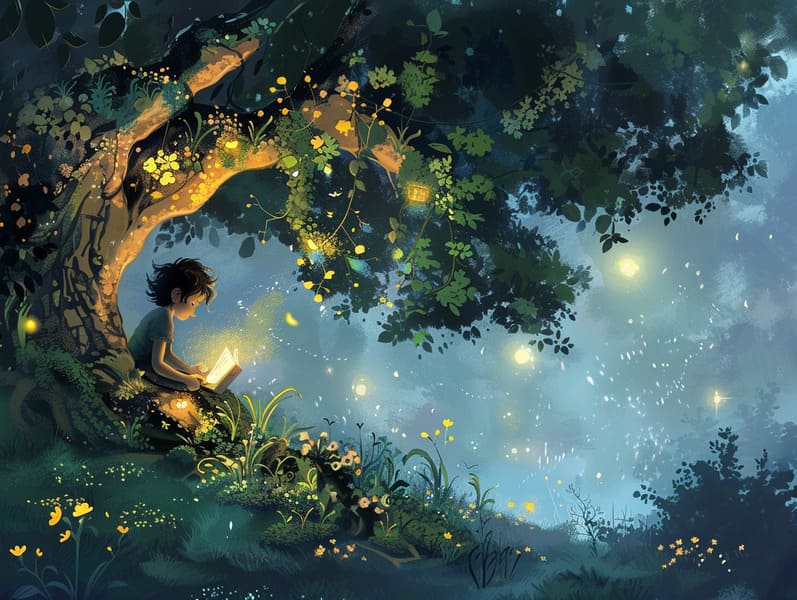The Origins of Fairy Tales to Read and the Unfading Grandeur.
The Origins of Fairy Tales to Read and the Unfading Grandeur.
Blog Article

Famous fairy tales have ancient roots. These narratives have been narrated from one generation to the next far before they were ever published. They developed from a variety of civilizations, including American traditions. They were initially transmitted among mature audiences, often carrying themes and messages concerning the societal norms and beliefs of the time.
The famous Grimm duo, the two Grimm brothers, were among the first to compile and release many of these beloved tales. Their compilation, "Grimm's Children's Stories," included tales like "The Story of Cinderella," "Little Brother and Little Sister," and "The True Story of Snow White," which have since become staples in the world of classic fairy tales. Similarly, Hans Christian Andersen's magical fairy tales, such as "The Mermaid," and "The Duckling that Could," have gained the love worldwide, solidifying their place in the pantheon of classic fairy tales.
Despite their ancient origins, these tales remain as relevant as ever, especially as nighttime stories for kids. These fantastical tales are now available in different formats, including artistically illustrated books, delightful animations, and web-based fairy tales.
Their enduring popularity can be connected to several whimsical characteristics:
Crucial Morals: Traditional fairy tales often present important moral lessons. Fairy tales like "The Boy Who Cried Wolf" teach the virtue of being truthful, while "The Hare and the Tortoise" highlight the qualities of persistence and unpretentiousness. These tales offer kids clear distinctions between right and wrong, shaping their moral compass in a mild yet important way.
Compassion and Knowledge: Fairy tales frequently illustrate beings facing struggles and tests, fostering young readers to connect with their struggles and encourage their triumphs. For instance, "Beauty and the Beast" conveys the value of looking deeper to see the true character of a character, cultivating warmth and comprehension.
Cultural Awareness: Many old fairy tales are steeped in the cultural contexts from which they blossomed. Immersing in these fairy tales can provide delightful insights into different cultures, fostering a sense of global respect and recognition.
Imagination and Innovation: The mythical elements in timeless fairy tales—magical beings—fuel children’s inventiveness. These tales take readers to magical realms, inspiring creative ideas and a sense of astonishment that endures a lifetime.
Classic fairy tales are not only charming but also didactic. They provide delightful tools in promoting various mental and emotional abilities in young ones. When classic fairy tales are voiced, they boost speaking abilities by offering new terms and complex sentence structures. This practice also promotes auditory skills and concentration, as the young listen intently, anxious to see what happens next.
Furthermore, analyzing the themes and characters check it out of timeless fairy tales can develop critical thinking and evaluative skills. Young readers are instructed to discover patterns, anticipate outcomes, and figure out cause and effect. These talks also encourage young readers speak out their thoughts and feelings, advancing their emotional intelligence.
In today’s digital era, the availability of online fairy tales has made these tales more obtainable than ever. Web platforms and software extend large libraries of classic fairy tales that can be accessed or played anytime, anywhere. Fairy tales narrated are particularly widespread, providing an immersive method for the young to delight in these charming stories. Read-aloud stories and read-out-loud videos transport characters and settings to life, often enhanced by captivating sound effects and melodies that enhance the narrative adventure.
The timeless allure of traditional fairy tales lies in their ability to transform to today's world while maintaining their fundamental ideas. Contemporary modernizations of these tales often spotlight more varied characters and modern settings, making them meaningful to today’s audience. However, the underlying themes of boldness, humanity, and righteousness remain unchanged, continuing to impact audiences of all ages.
Timeless fairy tales also offer a sense of contentment and homeliness. They put forth a ordered narrative with a evident beginning, middle, and end, often finishing with the solving of conflicts and the triumph of righteousness over wickedness. This uniformity can be consoling for little ones, allowing a sense of unwaveringness in an unstable world.
Classic fairy tales continue to enthrall and edify new generations, maintaining their splendor and value in modern society. As bedtime stories for kids, they make available a perfect blend of captivation and insight, aiding moral values, empathy, and creativity. The abundance of online fairy tales and the widespread nature of fairy tales read aloud certify that these classic narratives remain reachable to new generations.
By guarding and distributing these stories, we continue to esteem the rich tapestry of fantasy and cultural heritage. Whether you are discovering a vibrantly illustrated book, perusing a web-based library, or hearing an narrated book, the enchantment of bedtime fairy tales is always within reach. These fairy tales convey of the immortal essence of fairy tales and its ability to bind us across eras and regions.
If you are experiencing a richly illustrated book, delving into a electronic collection, or listening via an read-aloud book, the spell of famous fairy tales is always within reach.
These fairy tales emphasize of the continued impact of narratives and its ability to unite us across eras and regions, weaving a spell that charms and informs alike.